MO Tested: Michelin Road 5 Tire Review

Improved wet weather performance in a versatile sport-touring tire
When we consider sport-touring motorcycle tires, we typically envision clipping an endless series of apexes as we take a day’s ride (or two) through scenic countryside – perhaps with some soft luggage and a passenger on the back. Well, sport-touring tires have morphed over the years into something of a jack-of-all-trades tire made for the active motorcyclist who uses their bike every day. The sport-touring tire’s job description now includes frequent commuter duty plus the weekend fun runs to the local twisties in addition to more traditional sport-touring adventures. Michelin says the new Road 5 tire is up for the challenge.
What we have in the Michelin Road 5 is the company’s newest implementation of technologies unveiled in the Power RS in a different category of motorcycle tire. So, while the underlying technologies, like ACT+ and 2CT+, are used in a similar fashion, the tires themselves are engineered to perform a very different task. Where the Power RS is focused on performance street riding with occasional track day use, the Road 5 is intended for everyday riding – read commuting – in the wet and dry followed by weekend canyon carving. To improve the Road 5’s wet weather performance, Michelin’s engineers also updated the sipes that were used in the Pilot Road 4 sport touring tires.
Technologies
We’ll tour the Road 5 tires from the inside out, starting with the ACT+ (Adaptive Casing Technology). To maintain straight-line stability, Michelin stresses that the tire’s crown needs to remain supple. By utilizing a casing with cords that are almost 90°, the Road 5 achieves this softness. However, the sidewalls need stiffness to combat cornering forces. Michelin achieves this by wrapping the casing around the tire bead and back onto itself. Since the casing’s cords are not exactly at 90° to the tire’s rotation, the cords overlap themselves at an angle (rather than being parallel to each other) for further rigidity.
Now, let’s move out to the rubber compounds. Michelin used different approaches on the front and rear tires. On the front, Michelin’s 2CT (Two-Compound Technology) uses two different blends of all-silica compounds. The center 44% of the tread incorporates a harder compound than the two 28% sides. Naturally, the harder compound offers better wear characteristics when the bike is straight up and down, while the side compounds are grippier for leaning over in a corner.
The rear tire uses 2CT+, which is 2CT with some added sauce. So, the center 66% uses silica in a higher concentration than the front for even more resistance to wear which is in line with the additional forces that the tire undergoes propelling the motorcycle. On the sides, however, the tread itself is a compound made with carbon black to provide additional grip when on the final 17% of the tread’s edge. The rear tire’s special sauce is that the harder, silica compound runs under the softer carbon black, providing additional stiffness to the carcass to handle the additional forces of accelerating at extreme lean angles.
Both the front and rear tires feature large sections of tread with no grooving of any kind on their edges. These come into play when a bike is leaned more than 35°, an amount that only happens on dry pavement. By essentially making the Road 5 tires slicks when they are at maximum lean, Michelin claims that the dry grip is much improved during spirited riding.
Finally, there’s the XST Evo (X Sipe Technology) that Michelin claims will allow Road 5 tires with 3,000 miles of use to perform just as well as brand new Pilot Road 4 tires in wet conditions. To further up the ante in the sport-touring segment, the company claims that the tires will outperform all of its competitors in the wet. The trick is how the sipes in the tire tread have evolved since they were first introduced in the Pilot Road 4 tires four years ago. Rather than just being a slit in the tire, the inner section is a teardrop shape to allow it to displace more water.
When tires are new, they can displace more water because the sipes themselves are deeper. However, as the tread wears away, the sipes get shallower, limiting the amount of water they can hold. This is why a change was made from the Pilot Road 4. According to Michelin, the teardrop-shaped interior of the XST Evo sipes in Road 5 tires can contain as much water as new Pilot Road 4 tires after 3,000 miles of use. To prove this point, Michelin staged a demonstration in which one of its test riders performed maximum braking passes on new Pilot Road 4s and used Road 5s (with approximately 3,100 miles). The results showed the Road 5s stopping the bike just shy of 4 ft. shorter than the Pilot Road 4s. Watching a rider stop with enough force to lift the rear tire in standing water was really quite impressive.
An interesting aside about the manufacturing of the Road 5 tires and their XST Evo sipes: Because of the shape of the molds required to create the teardrop portion of the sipes, traditional machining could not be used. Instead, metal additive manufacturing, which could be seen as the metallic version of 3-D printing, was utilized. In the process, the parts are built layer-by-layer to create intricate shapes that were required for the Road 5’s siping patterns.
Finally, the tire profile of the Road 5 is slightly more aggressive than that of the Pilot Road 4. This should make the Road 5 slightly more responsive – but still with the quite neutral steering characteristics that Michelin claims is important in sport-touring tires – than the Pilot Road 4.
Where the rubber meets the road
What would a tire introduction be without riding sessions to provide journalists with the practical experience to write knowledgeably about the tires? The Monteblanco Circuit outside Seville, Spain, was where we would get to sample the Road 5 out on the open road and in the controlled environment of the track.
The day began with 180 miles of street riding on the undulating, mostly silky-smooth tarmac of the Andalusian countryside. The rolling hills, combined with the spectacular pavement make for a motorcyclist’s Disneyland-type experience, making it – for the time I was there – the happiest place on the two-wheeled earth.
For my street ride, I chose the Yamaha MT–07 as my mount, and as soon as we arrived at the twisties, I could tell that the Road 5s were much better than the Bridgestones on which I’d last experienced a MT–07. While turn-in was neutral, I wouldn’t call it slow. Rather, by neutral, I mean that it didn’t tend to fall into a corner the way a more aggressive profile would. Instead, as I’d experienced with the Pilot Road 4s in the past, I could dial in the right amount of lean without having the tires try to deliver more or less than I wanted. If I needed to change my line mid-corner, all I had to do was apply a little pressure to the grips. Similarly, there was absolutely no tendency to stand up under braking while leaned over, making it possible to easily trail-brake all the way to the apex if I desired.
I found the tire feedback to be very good. For example, on one section of dirty pavement, I could feel the tires begin to squirm as they coped with the lessened grip of that particular corner, giving me notice not to ask for more from them. At peg-dragging lean angles, the Road 5s were quite happy to rail through corner after corner.
The track portion of the day was divided into dry and wet sessions. I’ll have to be honest here. In the dry session, I only had three laps each (that includes the in and out laps) on a Ducati Supersport and a BMW S1000 XR. The Monteblanco Circuit is a tight and technical track, and a mere 6 laps isn’t enough for me to fully learn my way around, much less form more than a cursory impression of the tires.
My takeaways from the track were largely from the increased intensity of acceleration and braking. Accelerating down the front straight at speeds markedly above what you’d expect to subject a sport-touring tire to endure on the street, the Ducati felt planted and rock stable, asking for more when it was time to close the throttle and begin braking. The BMW, with its softer, longer traveling suspension, shimmied and wagged its handlebar when I whacked the throttle open. Not even moving my body as far forward as possible was able to prevent this from happening. Again, I attribute this to the BMW rather than to the Michelins.
While the Road 5s were capable of handling the intensified braking of the track environment, they weren’t as happy to oblige as they were on the street, squirming a bit during the harder-braking sections on both bikes. The tire profile that made the MT–07 feel so neutral-steering on the street seemed a little slow on the track, which only serves to remind us why more track-oriented tires have a more angular front profile. While they worked fine, the track is not the place for Road 5 tires.
Michelin, if they truly wanted us to experience the tires’ cornering grip at elevated speeds, should have given us more laps to really sample them, but it might have led to highlighting more of the tires’ weaknesses in the track environment. The Road 5 tires are not track tires. They were intended to be sport-touring tires, which place an entirely different level of stress on them.
The wet session at the track was much more successful – eye-opening, in fact. Here we were given two intense braking maneuvers to undertake each lap, and while the number of laps for each of the bikes, this time a Triumph Street Triple RS and a Yamaha MT–10, were the same, this track session was successful in its laser focus. Although the primary exercises were braking-related, the entire track was wet, which allowed us to explore cornering grip, too.
The first braking test had us decelerating from approximately 70 mph down to about 30 mph for a corner. With each pass through this braking test, I increased my intensity. I could feel what was happening down at the contact patches enough to keep the rear brake from tripping its ABS in all but one instance. The speed with which the Road 5s could haul the bikes down from speed was impressive.
The second braking test came close to simulating a maximum braking/swerve maneuver that you’d likely encounter in an urban environment. We approached the braking zone at about 55 mph and braked as hard as we could before releasing the binders and swerving around a series of cones that represented the back of a vehicle. Again, the braking feel was exemplary. The tires never protested during the dynamic steering inputs of a swerve. After the wet track session, I completely understood why the Michelin reps had spent so much time explaining how much effort the designers had put into the weather performance of the Road 5 tires.
Michelin Road 5 Tire Sizes | |
|---|---|
| Front | 120/60 ZR17 120/60 ZR17 |
| Rear | 150/70 ZR17 160/60 ZR17 180/55 ZR17 190/50 ZR17 190/55 ZR17 |
Though I only had a single day riding the Michelin Road 5 tires, I came away impressed with how well they performed on the street. The Road 5s reminded me quite a bit of their precursors, the Michelin Pilot Road 4s (which, by-the-way, are still available). So, if you’re a fan of the 4s you might want to give the Road 5s a try to see if you like them better. Michelin even says that the Road 5s will offer durability that is slightly better than that of the Pilot Road 4s. However, in the wet, the Road 5s really surprised me. Riders who live in locations where rain is a regular part of their riding experience owe it to themselves to take a good, long look at the Michelin Road 5s the next time they’re shopping for sport-touring tires – or even their everyday tires, for that matter.
The Michelin Road 5 tires are available in dealerships, now. As with the Pilot Road 4s, there are two other variants of the Road 5. The Michelin Road 5 GT is specifically designed for heavier bikes like the BMW R 1200 RT and the Kawasaki 1400 GTR. The GTs will be available in 2019. The Michelin Road 5 Trail for adventure motorcycles will be available later this year.
We are committed to finding, researching, and recommending the best products. We earn commissions from purchases you make using the retail links in our product reviews and other articles. Learn more about how this works.

Like most of the best happenings in his life, Evans stumbled into his motojournalism career. While on his way to a planned life in academia, he applied for a job at a motorcycle magazine, thinking he’d get the opportunity to write some freelance articles. Instead, he was offered a full-time job in which he discovered he could actually get paid to ride other people’s motorcycles – and he’s never looked back. Over the 25 years he’s been in the motorcycle industry, Evans has written two books, 101 Sportbike Performance Projects and How to Modify Your Metric Cruiser, and has ridden just about every production motorcycle manufactured. Evans has a deep love of motorcycles and believes they are a force for good in the world.
More by Evans Brasfield



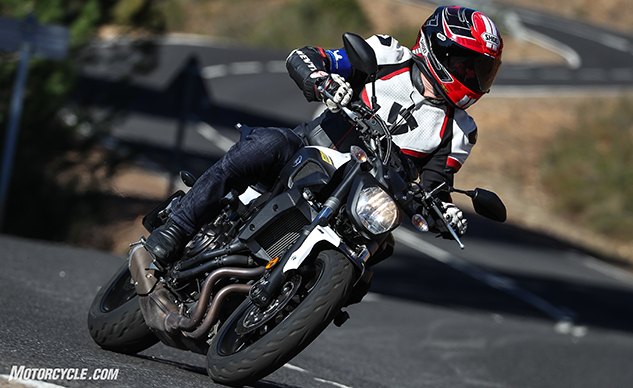


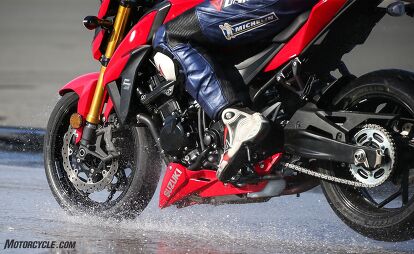


























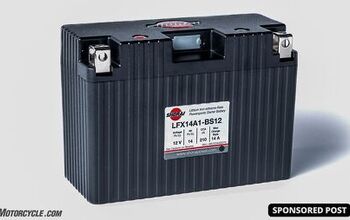
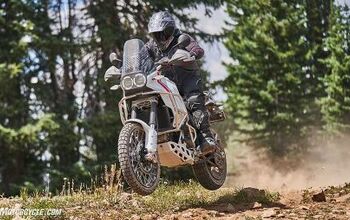
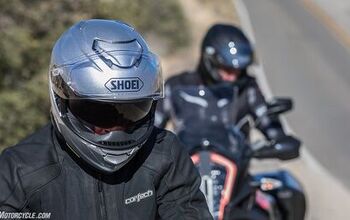





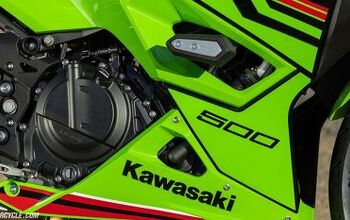






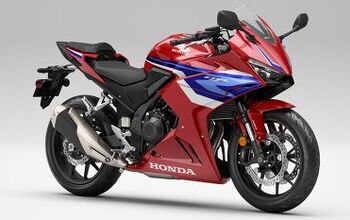


Comments
Join the conversation
Been happy with my Pirelli Angel GT's will be interested to see some feedback on how these compare.
On my car, a MB SLK Michelin pilot super sports are wonderful. But on my Ninja I prefer the Dunlop Q3 or the Michelin.